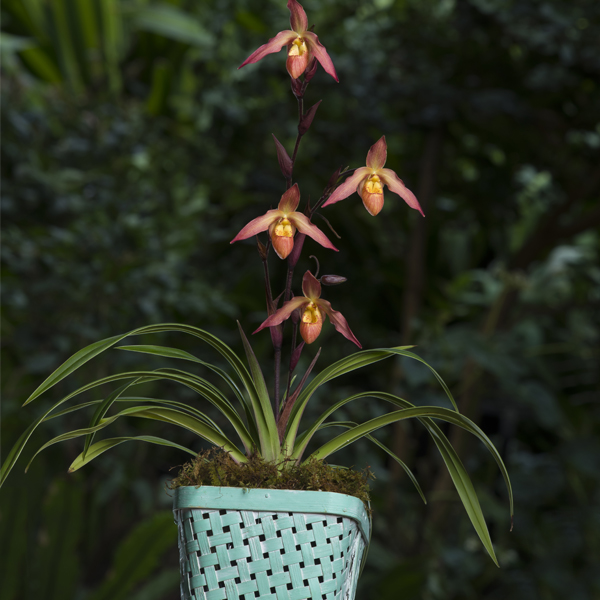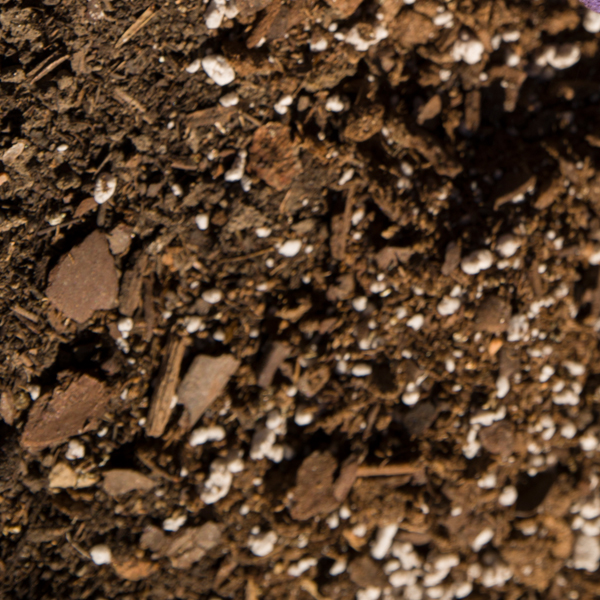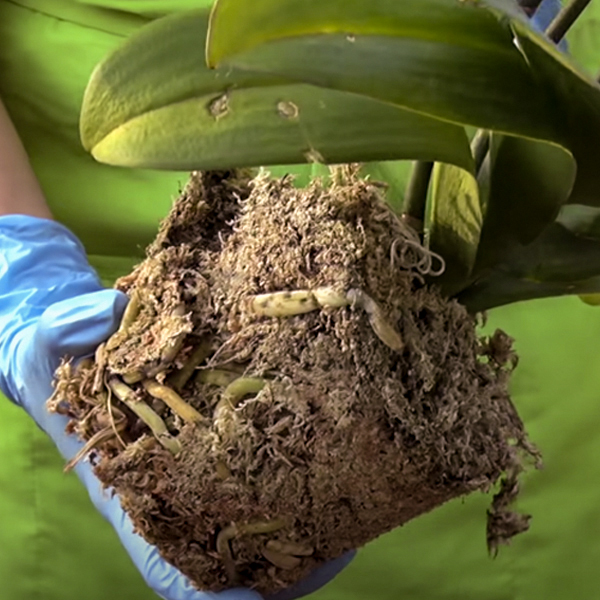Talk around the Garden is all about orchids this month, with the opening of our Orchid Show. Among the many interesting orchid conversations, there is one question that gets asked repeatedly by gardeners of all skill levels: "How do I repot my orchid?"
Luckily, the answer for most orchids is, "It's easy."

Orchids should be repotted when new; every year or two; or when crowded roots push up and out of the pot.
Spring: time for a close-up.
Other than watering and occasionally fertilizing them, you probably don't look closely at your orchids all that often when they're not in bloom. Spring is the time to examine each plant with a critical eye to assess the need for repotting. It's also when you'll see the new growth that signals emergence from the dormant cycle—the best time for repotting.
Is it new?
Holiday gift orchids or newly-purchased plants are often planted with sphagnum moss, which absorbs and holds water—creating prime conditions for orchid root rot. Repot all new orchids as soon as they're done blooming.
When was the last re-potting?
Orchids need both the nutrients from the chunky, loose bark mix they're planted in and the air space in between the pieces. As the mix breaks down to particle size, it compacts the air spaces inside the pot—virtually suffocating your orchid's roots. Check the bark mix every spring and repot when you notice decomposition.
Is it crowded in there?
While orchids prefer a small pot—weaving their roots through the compost as they grow—they eventually run out of room. That's when their roots push the plant up above the rim of the pot or reach out into the air, looking for breathing space—a sure sign that it's time to re-pot.

Fresh bark mix is chunky and loose; decomposed mix fills in the air pockets that orchid roots need.
Gather a few supplies.
Repotting an orchid sounds complicated and exotic, but it's a simple process requiring just a few items:
- Fresh bark mix. The mix matters: some typical store-bought mixes deteriorate far too rapidly. For high-quality mixes, Chicago-area orchid fans can travel west to Orchids by Hausermann's, an orchid nursery that carries several bark options—not to mention fantastic plants. Online orchid specialists offer more options, too.
- A pot that's one size larger than the original, in case your orchid is ready to move up.
- Pruners and/or a sharp pruning knife, sterilized in a 10 percent bleach solution.
- Scissors or a razor blade for trimming roots and leaves.
- Gloves to protect your hands from splinters and prickles.
- A thin dowel or blunt knife for settling compost around the roots.

Healthy orchid roots are white; pale green tips indicate new growth.
Get to the root of it.
Now comes the interesting part
Remove the orchid from the pot. Roots can be potbound and sticky; first try "massaging" the pot to loosen the rootball. Not budging? Work a dull knife down and around the inside of the pot, then invert it and tap the pot on your work surface to remove.
Soak the roots. Examine the rootball and feel a few root ends. If the rootball is stiff and dry, soak it in water for a few minutes to soften the tissues. Careful: dried-out roots can snap!
Loosen and untangle roots gently. As you do, trim away black/hollow/soggy roots and remove the old compost trapped between the roots. Refresh the disentangled roots with a thorough rinse to wash away all the tiny bits of soil that can clog up breathing spaces inside the pot.
Settle plant into the new pot. Holding the plant in one hand, place the plant down into the pot. Pour fresh bark mix around the plant, using a dowel or blunt knife to work it all the way down and between the freshly separated roots.
Water thoroughly. Then test your patience: wait a full week or two before watering again—that break stimulates root growth in the new medium.
Know your orchid.
While this basic potting method works for most orchids, some require special care, such as dividing or mounting. Our Lenhardt Library is a great resource for specialty orchid information—we've counted more than 600 books, videos, and other orchid resources there, all available to smart gardeners in one beautiful space! Come in for a visit while you're at the Orchid Show!
Karen Zaworski is a garden writer and photographer who lives and gardens in Oak Park, Illinois.

